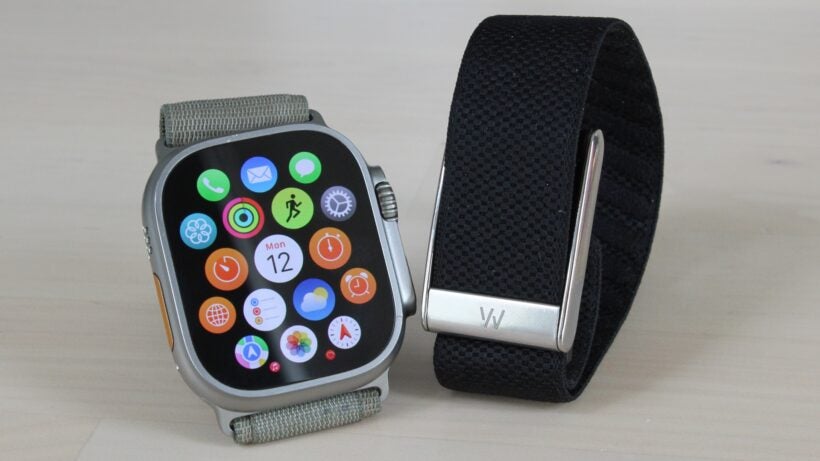Discover the select group of Apple Watch apps that replicate the Whoop experience.
The Whoop 5.0 and MG offer a unique balance of health and fitness insights that have left the Apple Watch playing catch-up in recent years.
However, the screenless tracker can’t do everything, and wearing both devices on the wrist is either an expensive compromise or not to everyone’s taste.
So, is it possible to combine the best features from Whoop into an Apple Watch? The answer is yes. The App Store has tons of apps and services available to help you replicate the experience.
The only downside is that the insights are spread across multiple apps. However, if you’re looking to consolidate your devices or cancel your Whoop subscription and switch to Apple, this guide is your key to a well-rounded experience.
Things the Apple Watch can’t yet replicate:
Whoop overhauled its platform in May 2025 to include numerous new health-focused insights, including Whoop Age/Healthspan, blood pressure insights (in beta), ECG/AFib detection, and the potential for future blood test integration via Advanced Labs.
Some of the updates, like the heart screen functions available on the Whoop MG, have been available on the Apple Watch for years. However, not every function can yet be replicated by Apple’s smartwatch. Here are a few notable ones:
- Blood pressure
- Journal/trends analysis
- Blood test integration (US-only; arriving in late 2025)
Strain

Athlytic ($29.99/£29.99 per year) is essentially a Whoop alternative and offers analysis of sleep, HRV recovery, trends, and workout performance. You can conduct most of the analysis mentioned below in one place, and overall, its data is quite useful.
It’s particularly geared toward workout analysis and recovery, and, like Whoop, it offers exertion scores based on your workouts. It’s not as holistic as Whoop, which includes non-tracked workouts and general activity in the score.
- Read next: Best Apple Watch apps you need to download
Apple has added Training Load data to the Apple Watch through watchOS 11, which also replaces some of the utility provided by Whoop’s Strain core natively. It will analyze the amount of workouts you’re doing and compare that to previous weeks. It’s not a direct replica of the Strain core, but Whoop advises a daily strain target, so this does address some of the gap.
It also combines sleep and recovery data in one place—so if you’re seeking a one-stop shop for Whoop functionality, Athlytic does the job.
Recovery

Athlytic covers many of Whoop’s features, and also offers a singular recovery score based on HRV. However, there is one app that performs this specific analysis more effectively: Training Today.
Training Today (£2.95/month) quietly works in the background, mining data from Apple Health and turning it into an analysis of your HRV. It’s a little pricey given what you get in Athlytic, but it has some unique features.
Unlike Whoop, it provides a semi-real-time analysis of your HRV and training readiness. This means you can see how recovered you are not only on a given day but also throughout the day.
If your HRV rebounds later in the day due to getting rest and eating well or declines for other reasons, you can plan your session accordingly. In contrast, Whoop captures your HRV only while you sleep; your score remains static until the next morning.
Sleep

Apple Watch sleep tracking has improved significantly over the years, now featuring sleep staging and important metrics for bedtime consistency. However, it still falls short of Whoop, which provides insights on sleep latency, efficiency, and the essential comparison between sleep need and actual sleep.
The App Store offers numerous alternatives. We’ve tested the best sleep tracking apps for Apple Watch, and our top pick would be Rise. It has a subscription (a punchy $69.99 a year), but the visualizations and data are some of the best on Apple Watch. If you prefer a one-time purchase, try AutoSleep, which is simpler but packed with data.
Health Metrics

This one is easy. The Health Monitor on Whoop offers a quick overview of your core vitals and how they compare to your baselines, including breathing rate, resting heart rate, temperature, blood oxygen, and heart rate variability.
Apple has added similar functionality, so an update to watchOS 11 will introduce the Vitals app. It also tracks these metrics and alerts you if two or more are outside of your normal range, which can be a significant indicator of illness or fatigue.
Don’t forget, the Apple Watch has also offered ECG functionality and high/low heart rate alerts for years—a new feature exclusive to the Whoop MG. Another health feature ticked off.
Strength Trainer

Whoop’s Strength Trainer could be improved, but it does a good job of guiding you through weight workouts and adding the effects to your strain score.
The Strong app (a free download) can fill this role on the Apple Watch, letting you follow sets and build a workout. It’s not exactly a rep counter, but you can easily record the weights and sets you complete. This essentially covers the main aspects of Strength Trainer.
Health Metrics

While the Apple Watch has Mindfulness apps, it doesn’t track stress like Whoop’s Stress Monitor. We tried StressWatch, a free download from the App Store, which offers guidance on stress levels and advice on how to manage them. It will also periodically reveal your stress level using the color-coded scale shown above and enable you to explore your HRV history as well.




